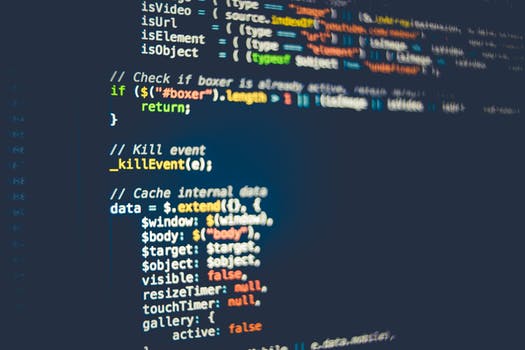TheDeveloperBlog.com
C-Sharp | Java | Python | Swift | GO | WPF | Ruby | Scala | F# | JavaScript | SQL | PHP | Angular | HTML
Computer Graphics Back Face Removal Algorithm
Computer Graphics Back Face Removal Algorithm with Computer Graphics Tutorial, Line Generation Algorithm, 2D Transformation, 3D Computer Graphics, Types of Curves, Surfaces, Computer Animation, Animation Techniques, Keyframing, Fractals etc.
Back Face Removal AlgorithmIt is used to plot only surfaces which will face the camera. The objects on the back side are not visible. This method will remove 50% of polygons from the scene if the parallel projection is used. If the perspective projection is used then more than 50% of the invisible area will be removed. The object is nearer to the center of projection, number of polygons from the back will be removed. It applies to individual objects. It does not consider the interaction between various objects. Many polygons are obscured by front faces, although they are closer to the viewer, so for removing such faces back face removal algorithm is used. When the projection is taken, any projector ray from the center of projection through viewing screen to object pieces object at two points, one is visible front surfaces, and another is not visible back surface. This algorithm acts a preprocessing step for another algorithm. The back face algorithm can be represented geometrically. Each polygon has several vertices. All vertices are numbered in clockwise. The normal M1 is generated a cross product of any two successive edge vectors. M1represent vector perpendicular to face and point outward from polyhedron surface N1=(v2-v1 )(v3-v2) Advantage
Back Face Removed Algorithm
Repeat for all polygons in the scene.
Next TopicZ-Buffer Algorithm
|
Related Links:
- Computer Network | Transport Layer Protocols
- Computer Network | Application Layer
- Computer Graphics Cathode Ray Tube | CRT
- Computer Graphics Direct View Storage Tubes
- Computer Graphics Flat Panel Display
- Computer Graphics | Input Devices
- Computer Graphics Scan Conversion Definition
- Computer Graphics | Trackball
- Computer Graphics | Light Pen
- Computer Graphics | Image Scanner
- Computer Graphics | Output Devices
- Computer Graphics | Plotters
- Computer Graphics Scan Converting a Point
- Computer Graphics Scan Converting a Straight Line
- Computer Graphics DDA Algorithm
- Computer Graphics Bresenham's Line Algorithm
- Computer Graphics Defining a Circle
- Computer Graphics Boundary Fill Algorithm
- Computer Graphics Flood Fill Algorithm
- Computer Graphics Scan Line Polygon Fill Algorithm
- Computer Graphics | Line Clipping
- Computer Graphics Introduction of Transformation
- Computer Graphics Translation
- Computer Graphics Scaling
- Computer Graphics Rotation
- Computer Graphics Reflection
- Computer Graphics Shearing
- Computer Graphics Homogeneous Coordinates
- Computer Graphics Composite Transformation
- Computer Graphics Window
- Computer Graphics Window to Viewport Co-ordinate Transformation
- Computer Graphics Zooming
- Computer Graphics Panning
- Computer Network | Error Correction
- Computer Network | Error Detection
- Computer Architecture VS Computer Organization
- Computer Instructions | Computer Organization and Architecture Tutorial
- Computer Registers
- Computer Network Routing | Types of Routing
- Computer Network | Digital Signature
- PGP - Pretty Good Privacy
- Computer Graphics Programs
- Computer Graphics | Clipping
- Computer Network Tutorial
- Computer Graphics Tutorial
- Computer Graphics | Text Clipping
- Computer Graphics | Polygon
- Computer Graphics Pointing and Positioning Techniques
- Computer Graphics Elastic or Rubber Band Techniques
- Computer Graphics Color CRT Monitors
- Computer Graphics | Point Clipping
- Computer Graphics Dragging
- Computer Graphics 3D Shearing
- Computer Graphics Introduction of Shading
- Computer Network | TCP/IP model
- Computer Graphics Constant Intensity Shading
- Computer Graphics Gouraud shading
- Computer Graphics Phong Shading
- Computer Graphics Animation
- Computer Graphics Hidden Surface Removal
- Computer Graphics Back Face Removal Algorithm
- Computer Graphics Application Areas of Animation
- Computer Graphics Animation Functions
- Computer Graphics 3D Graphics
- Computer Graphics 3D Transformations
- Computer Graphics 3D Scaling
- Computer Graphics 3D Rotation
- Computer Graphics 3D Rotation about Arbitrary Axis
- Computer Graphics 3D Inverse Transformations
- Computer Graphics 3D Reflection
- Computer Organization and Architecture Tutorial | COA Tutorial
- Computer Graphics Bresenham's Circle Algorithm
- Computer Graphics Midpoint Circle Algorithm
- Computer Graphics Painter's Algorithm
- Computer Graphics Scan Line Algorithm
- Computer Graphics Area Subdivision Algorithm
- Computer Graphics 3D Modelling System
- Computer Graphics Projection
- Computer Graphics Perspective Projection
- Computer Graphics Parallel Projection
- Computer Network Digital Transmission
- Top 50 Computer Graphics Interview Questions (2021)
- Computer Graphics Midpoint Ellipse Algorithm
- HTTP - HyperText Transfer Protocol
- Computer Graphics Z-Buffer Algorithm
- Computer Graphics Display Processor
- Computer Network | Routing Algorithm
- Learn Computer Fundamentals Tutorial
- Computer Graphics Scan converting a Ellipse
- Computer Graphics Polynomial Method
- Computer Graphics Trignometric Method
- Computer Network Introduction
- Computer Network Components
- Computer Network Topologies
- Computer Network | Transmission Modes
- Computer Network Models
- Computer Network | Switching Techniques
- Computer Network | Switching Modes
- Computer Network | Client and Server Model
- DNS - Domain Name System
- FTP - File Transfer Protocol
- Telnet - Terminal Network
- Computer Network Features
- Computer Network Architecture
- Computer Network | Switching
- Computer Network Security
- Computer Network Privacy
- Computer Network | Transport Layer

